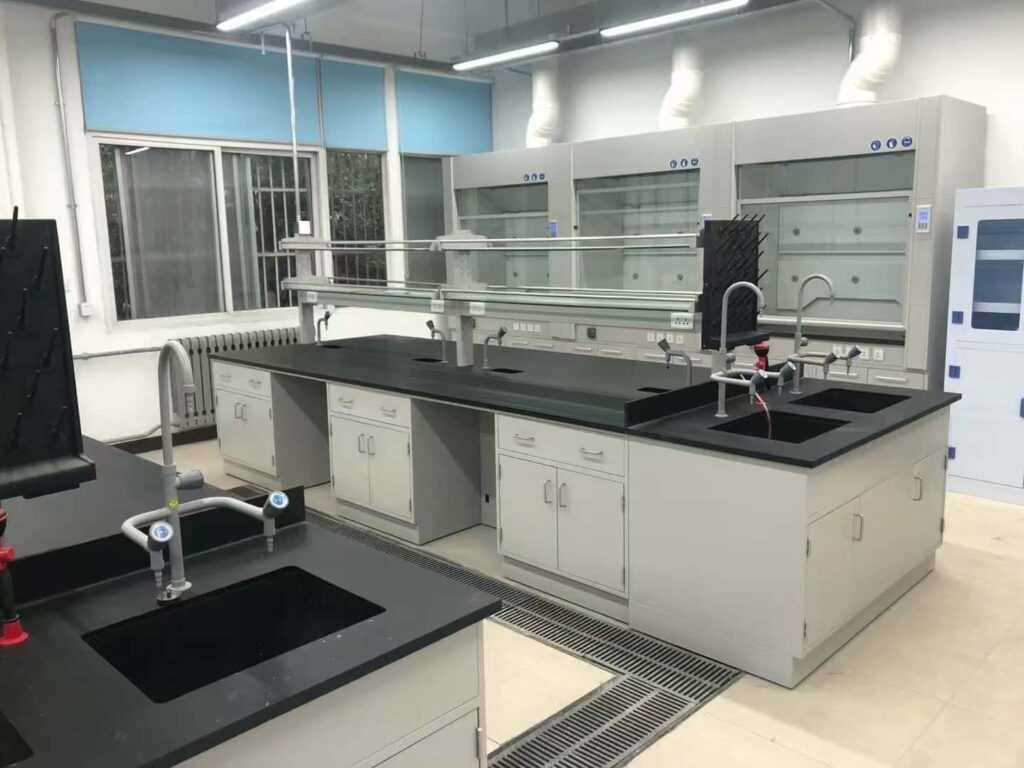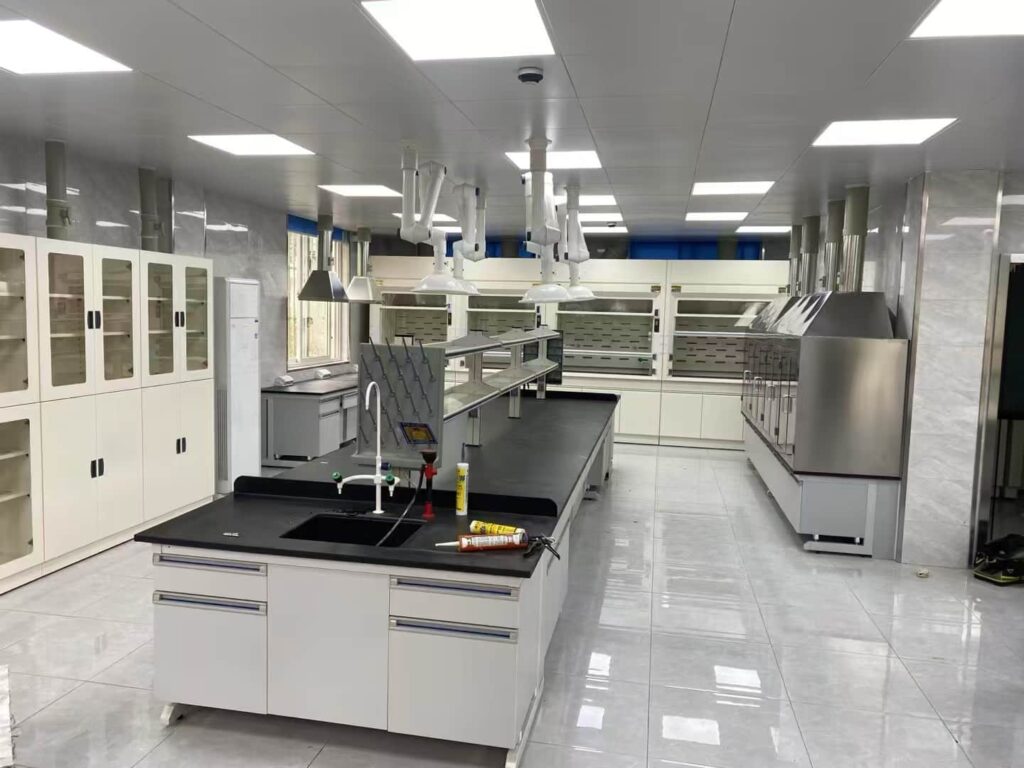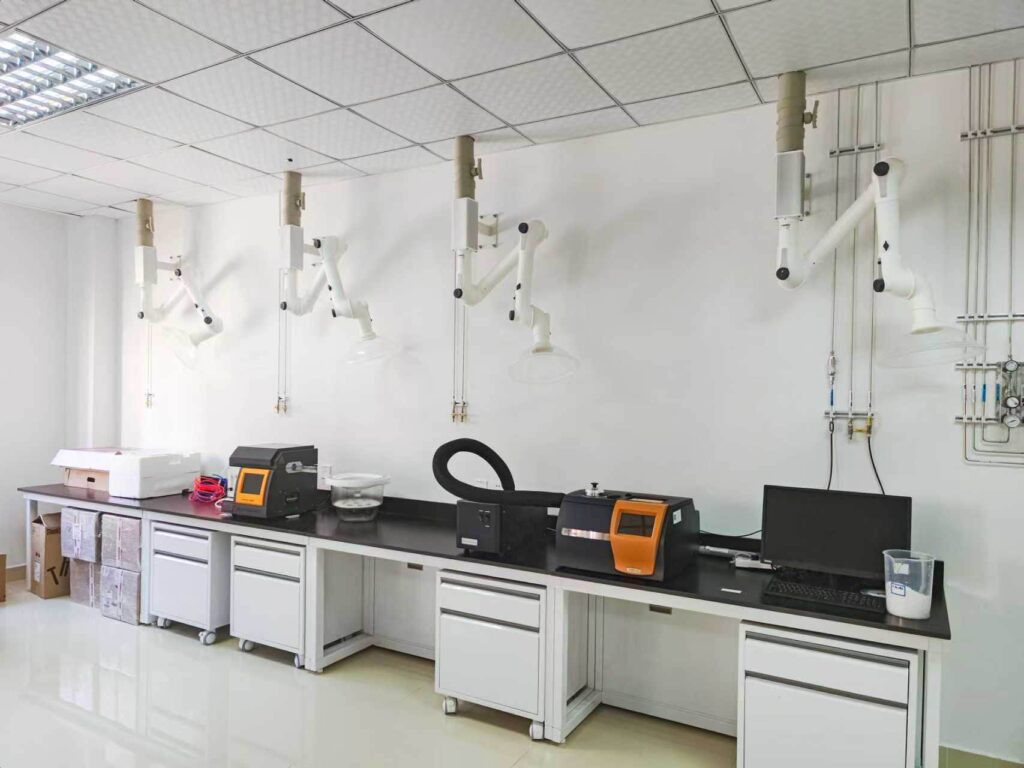The rapid advancement of technology is transforming the research environment, with laboratories emerging as the core hubs of innovation. From drug development to materials science, and from life sciences to information technology, the role of laboratories is becoming increasingly critical.
As the foundational infrastructure of laboratories, laboratory benches not only impact experimental efficiency but also directly influence research outcomes and safety. The demands placed on laboratory benches by modern laboratories have undergone significant changes.
Intelligence, modularity, and green sustainability have become design trends. This article combines industry development trends with corporate practices to explore the design trends of modern laboratory benches and provide references for laboratory construction.
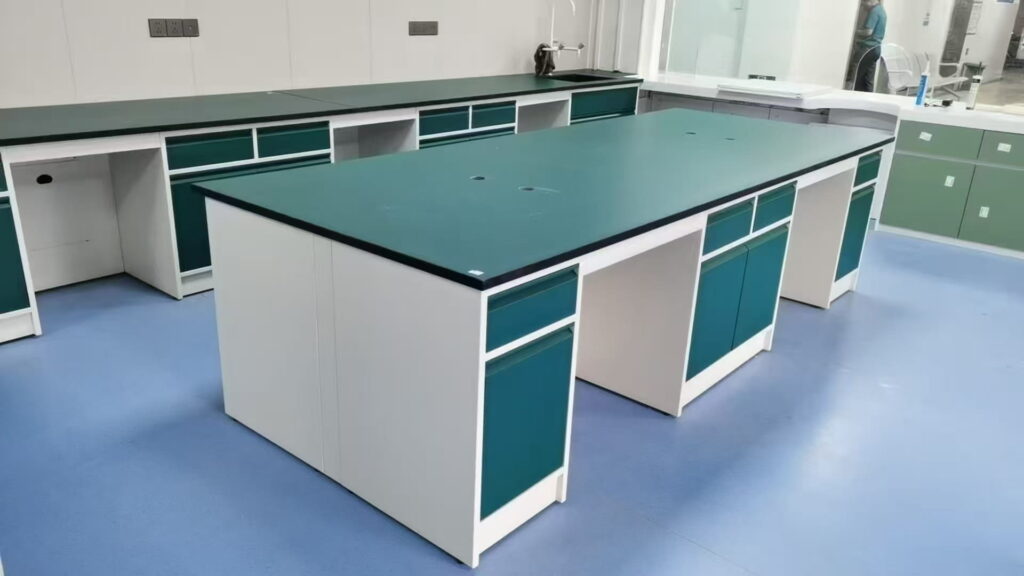
Current core trends in laboratories
✅ Trend 1: The unstoppable rise of intelligence
- Artificial intelligence, big data, and the Internet of Things are accelerating laboratory transformation.
- The global laboratory automation market continues to boom:
- Sales reached US$5.48 billion in 2021
- Projected to exceed 144.8 billion yuan by 2026 (CAGR 6.5%)
- The three core values of intelligent laboratory benches:
- AI control system: real-time data analysis and process optimization.
- Safety protection: automatic hazard handling modules + emergency response.
- Unmanned operation: robotic arms + AI delivery vehicles working in tandem.
▶️ Empirical evidence in the field of chemical synthesis:
- Automated laboratory benches have undergone three stages of upgrading:
Semi-automatic → Fully automatic → Autonomous synthesis path planning. - Key technological breakthroughs:
- Continuous flow system: Steady-state operation + real-time monitoring.
- Batch synthesis: Precise parameter control + high reproducibility of results.
- Machine learning reduces trial and error costs by 40%+.
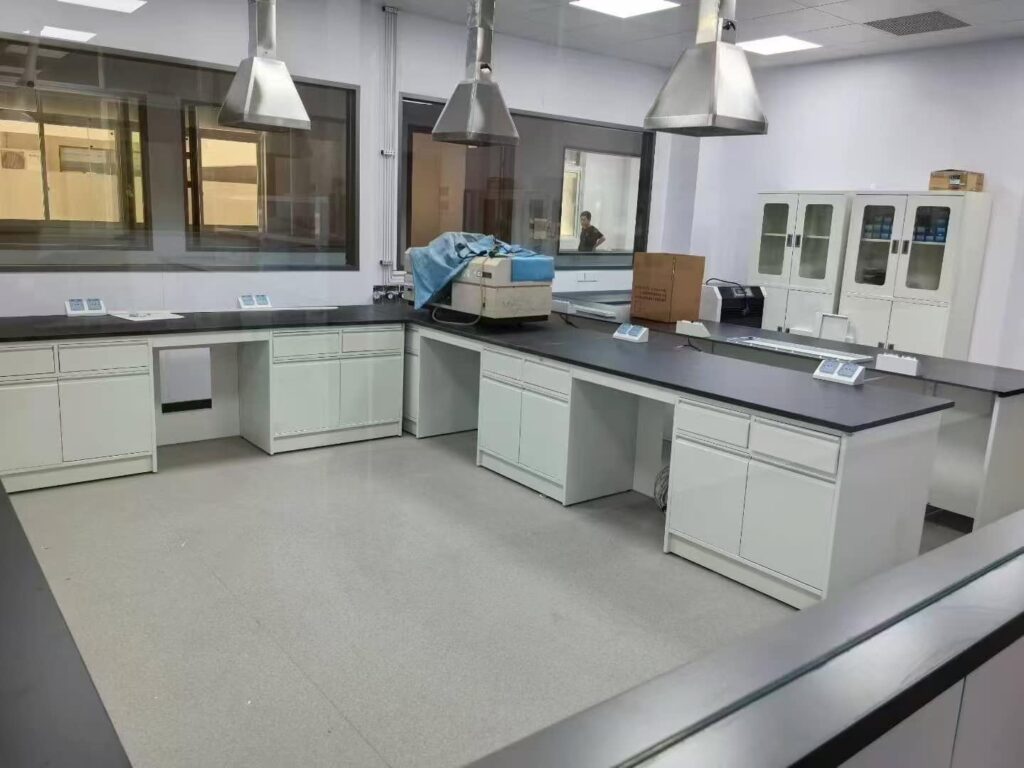
✅ Trend 2: Modularization Becomes a Necessity
Pain points of traditional laboratories:
⚠️ Long construction cycle ⚠️ Poor flexibility ⚠️ Difficult to renovate
Modular Laboratory Solutions:
- Core Equipment Upgrades:
Standardized laboratory benches and fume hoods integrated with water, electricity, gas, and ventilation systems. - Disruptive Efficiency Improvements:
1,000㎡ laboratory constructed in 15 days (traditional methods require 3–6 months). - Laboratory Bench Design with Expansion Interfaces:
Supports flexible reconfiguration based on research needs.
The foundation of future laboratories
Modular laboratory bench system
- Material revolution:
Stainless steel/ceramic countertops for corrosion resistance + epoxy resin for impact resistance. - Function integration:
Modular pre-installation of water, electricity, gas, and air modules for plug-and-play functionality. - Flexible expansion:
Interfaces compatible with future equipment upgrades.
📌 Case Study: A Medical School Laboratory Renovation
Through the modular laboratory bench system
Efficiency improved by 70% Space utilization increased by 45%
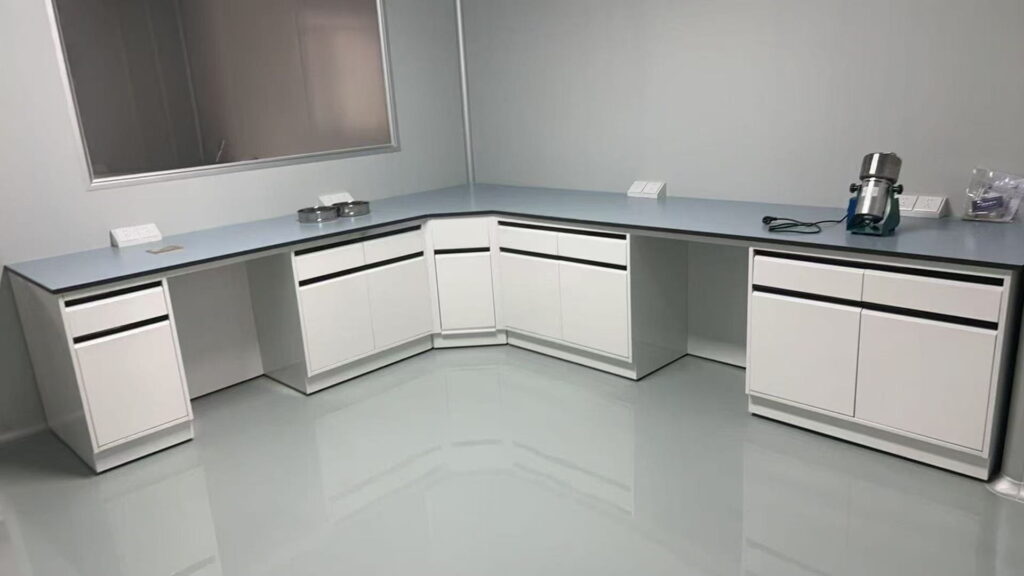
Customized Intelligent Ecosystem
| System Type | Core Functions | Laboratory Bench Integration Solution |
|---|---|---|
| Hazard Control | Explosion-proof Structure + Intelligent Fire Extinguishing | Embedded Sensors in Bench Top |
| Pollution Management | Waste Liquid Recovery + Vacuum Treatment | Built-in Recycling Pipeline System |
| Intelligent Services | Electric Lift + Data Collection | Integrated Touchscreen Control Panel |
Technological Architecture Innovation
- Hardware + Software + Operations and Maintenance Integration:
- BIM System for Laboratory Lifecycle Management
- VAV Variable Air Volume Technology for 30%+ Energy Savings
- Real-time Monitoring with Intelligent Laboratory Bench Terminals:
Visualization of Temperature/Humidity/Energy Consumption Data

Four Key Directions for the Future Laboratory
Direction One: Full-Process Automation
- Evolutionary Path of Laboratory Benches:
Assistive Tools → Autonomous Decision-Making Center - Objective:
Achieve A5-level full automation (as certified by Science Robotics)
Robots autonomously perform experiments and maintenance
Direction Two: Deep Modularization
- Upgrade the laboratory bench system to a research middleware platform:
- Rapidly reconfigure different functional modules (e.g., PCR zone → spectroscopic analysis zone)
- Seamless integration of cross-laboratory equipment
Direction Three: Green Sustainability
- Innovation in laboratory bench materials:
Recycled metals + eco-friendly composite materials. - Smart energy management:
Laboratory bench sensing system automatically enters standby mode for energy savings.
Direction Four: Interdisciplinary Integration
- Modular laboratory benches support:
Collaborative innovation across biology, materials science, and AI. - Typical case:
Gene editing workstation integrating CRISPR equipment with AI analysis terminals.
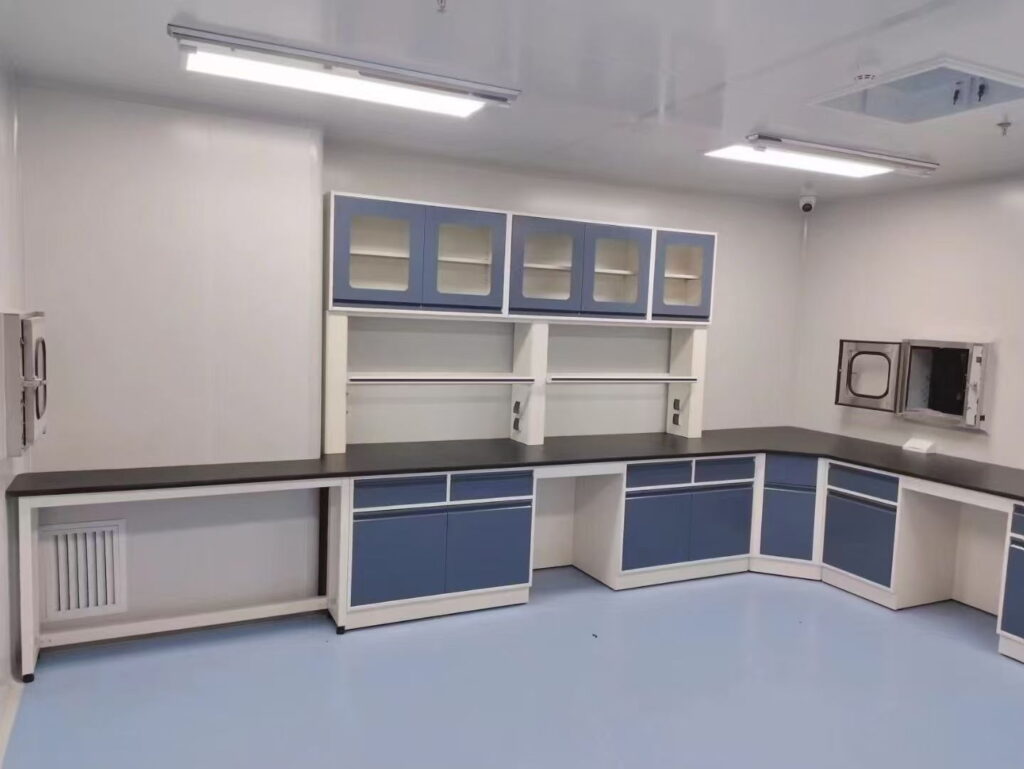
Action Recommendations
Upgrade your laboratory starting with the lab bench:
1️⃣ Opt for a modular system: Ensure scalability for the next five years
2️⃣ Integrate smart terminals: Connect to an AI management platform
3️⃣ Prioritize eco-friendly materials: Certified to ISO 14001 standards
Authoritative data: Laboratories using smart laboratory benches
Average efficiency improvement of 65% Accident rate reduction of 90%
The design trends of modern laboratories have created more efficient and flexible working platforms for researchers. Laboratory benches will continue to serve as the core, supporting scientific research innovation toward higher levels.


